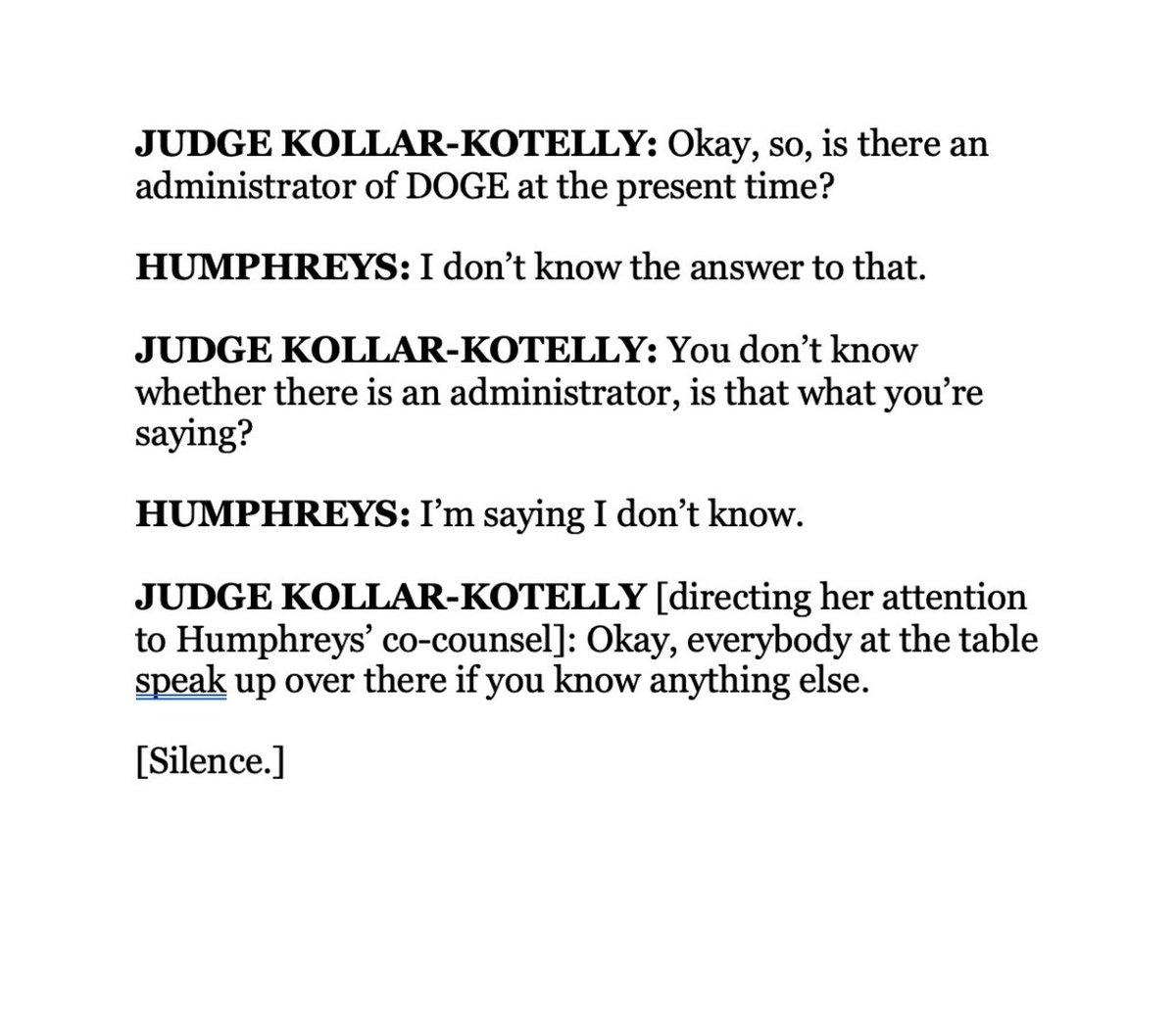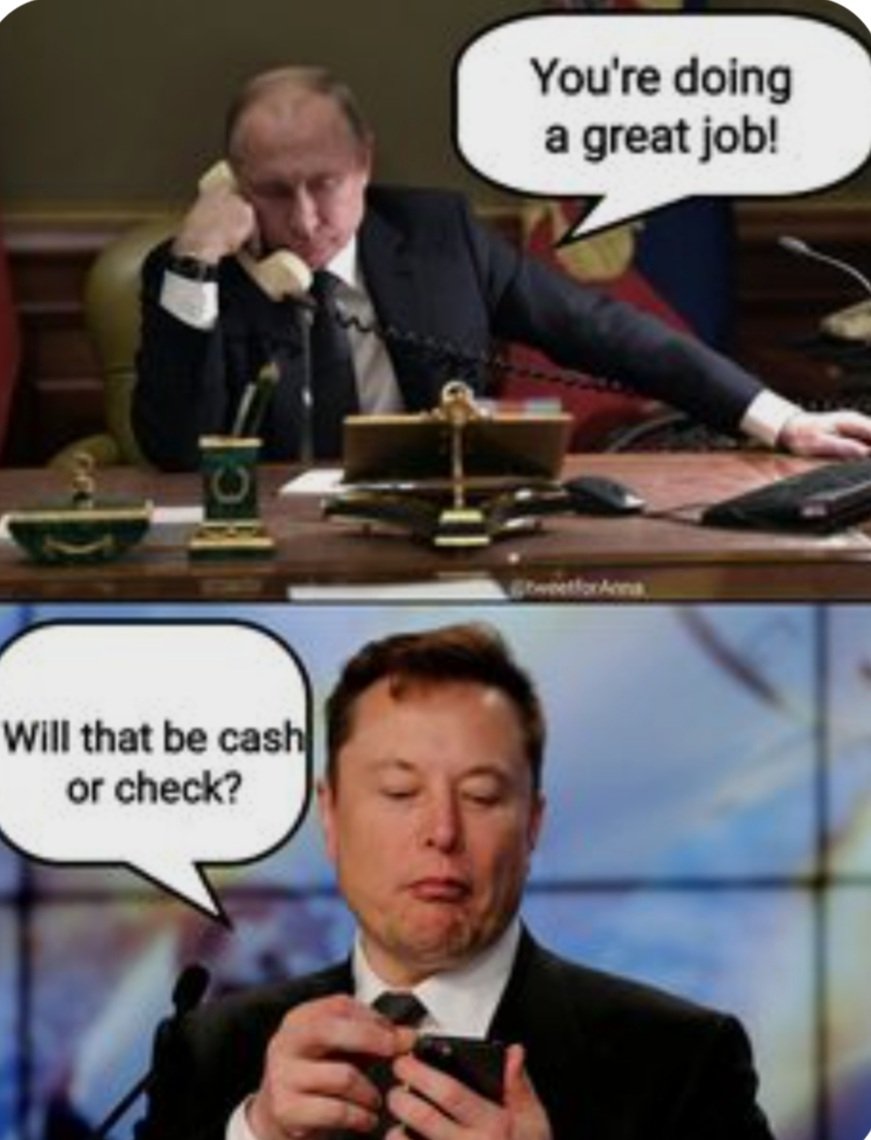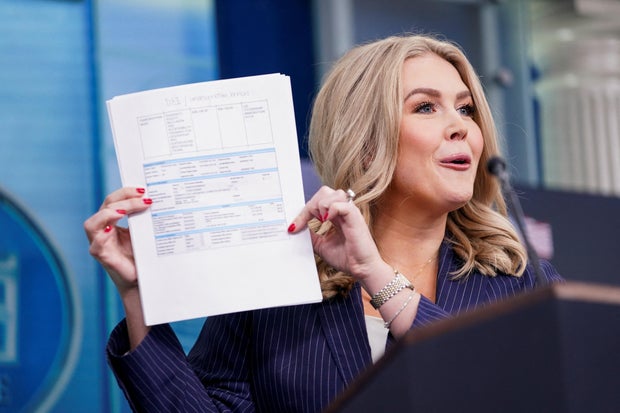The numbers shown above also don’t account for additional termination costs the government will have to pay to close these contracts, making them a “meaningless metric,” said Steven Schooner, a professor of government procurement law at George Washington University Law School.
Contractors will have to wind down staff, close offices, terminate leases and offload equipment — a normally lengthy process that will now be rushed and potentially litigated. (The White House official did not address this issue but said that the estimate was conservative because it did not include any administrative savings from managing the canceled contracts.)
The group also claims unrealistic estimates from several special kinds of umbrella contracts. When the government expects many different offices may want ongoing orders of the same general product or service — say, I.T. — it creates an overall contracting mechanism with a set ceiling under which several pre-vetted vendors can compete for individual orders. Each of those individual orders represents money the government has committed to spend. But the ceiling on the whole umbrella doesn’t.
“It’s not real money,” said Kelly Saldana, who spent nearly two decades working at U.S.A.I.D., including as the director of its office of health systems. If one of these larger contracts has a ceiling of $100 million and there’s only one $10 million order under it, the remaining $90 million isn’t savings or money that could be spent elsewhere.
“Nobody ever does that math,” Ms. Saldana said, describing the kind of math Mr. Musk’s group appears to have done.
A report by CBS News this week found another type of error involving this kind of contract: The group had triple-counted the $655 million maximum value of one contract for U.S.A.I.D. with numerous sub-contracts. DOGE has removed two of the duplicate listings, but on the line item that remains it still overestimates savings by at least $270 million, the Times analysis found.
Our analysis also found several more apparent overcounting mistakes, including a contract for D.E.I. services at the Environmental Protection Agency that was listed three times.
In another case, DOGE claimed $232 million in savings on a contract providing information technology support to the Social Security Administration. But The Intercept reported that only a sliver of the contract was canceled — a program to let users mark their gender as “X” — bringing the actual savings closer to $560,000.
Other anomalies on the site this week were apparent even without much knowledge of the apparatus of government contracting.
Do you have a confidential news tip about canceled contracts? Submit it here: nytimes.com/tips
The Times reported Tuesday about an $8 million contract for technical support services at the Immigration and Customs Enforcement agency that had been mistakenly entered into the database at a value of $8 billion, close to the size of the entire agency’s budget. This error alone made up nearly half of the combined value of all listed contract cuts.
The “wall of receipts” also lists hundreds of cases in which — even by the website’s own accounting — the changes saved taxpayers nothing. In one contract, the Securities and Exchange Commission had agreed to spend $10 million for a five-year subscription to the legal-research site Westlaw. But the savings are listed as $0. The S.E.C.’s contract expired in March 2024.
The “wall of receipts” page acknowledges that it may contain some inaccuracies. “Over time, the website will improve and the updates will converge to real-time,” it says. It also promises to share data in a “digestible and fully transparent manner with clear assumptions.”
So far, the site has not been fully transparent about the data it includes or about the changes it makes.
Around the same time news organizations published articles on major inaccuracies, the “wall of receipts” website was updated to correct the errors without changing the “last updated” date.
The contract list itself also represents only a small share of the group’s claimed overall savings. The website says the effort has saved $55 billion in total, but has provided no details on its “wall of receipts” for the bulk of that money. The top-line number also did not change this week, even after the site fixed errors that inflated the savings of individual grants.
One place where the office has more regularly communicated with the public is on the social media platform X, owned by Mr. Musk. But it has repeated some of the same kinds of errors there. In one post about the $8 billion mistake, the group claimed it had “always used the correct $8M in its calculations,” despite its updates to its site.
On Wednesday, the DOGE account reposted a message on X from the Treasury Department, saying that the I.R.S. had “rescinded a previously planned $1.9B contract” and done so “in connection” to the group’s work — describing a canceled contract that wasn’t yet on the DOGE.gov “wall of receipts.”
The account added a screenshot showing a $1.9 billion purchasing agreement — another one of those umbrella contracts — with an unnamed vendor, now marked “terminate for convenience.”
A code in the screenshot identified the vendor as Centennial Technologies, a company in Northern Virginia. But that company said its agreement had actually been canceled in the fall, during the Biden administration.
“Nothing changed now,” Mani Allu, the company’s chief executive, said in an email. He said that the slow-moving contracts database had not been updated to show the cancellation until this month, making the change appear new.
DOGE Claimed It Saved $8 Billion in One Contract. It Was Actually $8 Million.
Feb. 18, 2025
How Trump’s Medical Research Cuts Would Hit Colleges and Hospitals in Every State
The House Wants to Pass Trump’s Agenda in One Big Bill. Here’s What’s in It.
Aatish Bhatia, a graphics editor at The Upshot, creates interactive articles that explain complex ideas in simple ways. More about Aatish Bhatia
Emily Badger writes about cities and urban policy for The Times from Washington. She’s particularly interested in housing, transportation and inequality — and how they’re all connected. More about Emily Badger
David A. Fahrenthold is an investigative reporter writing about nonprofit organizations. He has been a reporter for two decades. More about David A. Fahrenthold
Josh Katz writes, designs and produces stories, charts and interactive journalism for The Times. More about Josh Katz
Margot Sanger-Katz is a reporter covering health care policy and public health for the Upshot section of The Times. More about Margot Sanger-Katz
Ethan Singer reports using data for The Upshot section as a member of the 2024-25 Times Fellowship class, a program for journalists early in their careers. More about Ethan Singer
Contractors will have to wind down staff, close offices, terminate leases and offload equipment — a normally lengthy process that will now be rushed and potentially litigated. (The White House official did not address this issue but said that the estimate was conservative because it did not include any administrative savings from managing the canceled contracts.)
The group also claims unrealistic estimates from several special kinds of umbrella contracts. When the government expects many different offices may want ongoing orders of the same general product or service — say, I.T. — it creates an overall contracting mechanism with a set ceiling under which several pre-vetted vendors can compete for individual orders. Each of those individual orders represents money the government has committed to spend. But the ceiling on the whole umbrella doesn’t.
“It’s not real money,” said Kelly Saldana, who spent nearly two decades working at U.S.A.I.D., including as the director of its office of health systems. If one of these larger contracts has a ceiling of $100 million and there’s only one $10 million order under it, the remaining $90 million isn’t savings or money that could be spent elsewhere.
“Nobody ever does that math,” Ms. Saldana said, describing the kind of math Mr. Musk’s group appears to have done.
A report by CBS News this week found another type of error involving this kind of contract: The group had triple-counted the $655 million maximum value of one contract for U.S.A.I.D. with numerous sub-contracts. DOGE has removed two of the duplicate listings, but on the line item that remains it still overestimates savings by at least $270 million, the Times analysis found.
Our analysis also found several more apparent overcounting mistakes, including a contract for D.E.I. services at the Environmental Protection Agency that was listed three times.
In another case, DOGE claimed $232 million in savings on a contract providing information technology support to the Social Security Administration. But The Intercept reported that only a sliver of the contract was canceled — a program to let users mark their gender as “X” — bringing the actual savings closer to $560,000.
Other anomalies on the site this week were apparent even without much knowledge of the apparatus of government contracting.
Do you have a confidential news tip about canceled contracts? Submit it here: nytimes.com/tips
The Times reported Tuesday about an $8 million contract for technical support services at the Immigration and Customs Enforcement agency that had been mistakenly entered into the database at a value of $8 billion, close to the size of the entire agency’s budget. This error alone made up nearly half of the combined value of all listed contract cuts.
The “wall of receipts” also lists hundreds of cases in which — even by the website’s own accounting — the changes saved taxpayers nothing. In one contract, the Securities and Exchange Commission had agreed to spend $10 million for a five-year subscription to the legal-research site Westlaw. But the savings are listed as $0. The S.E.C.’s contract expired in March 2024.
Far from ‘fully transparent’
The “wall of receipts” page acknowledges that it may contain some inaccuracies. “Over time, the website will improve and the updates will converge to real-time,” it says. It also promises to share data in a “digestible and fully transparent manner with clear assumptions.”
So far, the site has not been fully transparent about the data it includes or about the changes it makes.
Around the same time news organizations published articles on major inaccuracies, the “wall of receipts” website was updated to correct the errors without changing the “last updated” date.
The contract list itself also represents only a small share of the group’s claimed overall savings. The website says the effort has saved $55 billion in total, but has provided no details on its “wall of receipts” for the bulk of that money. The top-line number also did not change this week, even after the site fixed errors that inflated the savings of individual grants.
One place where the office has more regularly communicated with the public is on the social media platform X, owned by Mr. Musk. But it has repeated some of the same kinds of errors there. In one post about the $8 billion mistake, the group claimed it had “always used the correct $8M in its calculations,” despite its updates to its site.
On Wednesday, the DOGE account reposted a message on X from the Treasury Department, saying that the I.R.S. had “rescinded a previously planned $1.9B contract” and done so “in connection” to the group’s work — describing a canceled contract that wasn’t yet on the DOGE.gov “wall of receipts.”
The account added a screenshot showing a $1.9 billion purchasing agreement — another one of those umbrella contracts — with an unnamed vendor, now marked “terminate for convenience.”
A code in the screenshot identified the vendor as Centennial Technologies, a company in Northern Virginia. But that company said its agreement had actually been canceled in the fall, during the Biden administration.
“Nothing changed now,” Mani Allu, the company’s chief executive, said in an email. He said that the slow-moving contracts database had not been updated to show the cancellation until this month, making the change appear new.
DOGE Claimed It Saved $8 Billion in One Contract. It Was Actually $8 Million.
Feb. 18, 2025
How Trump’s Medical Research Cuts Would Hit Colleges and Hospitals in Every State
The House Wants to Pass Trump’s Agenda in One Big Bill. Here’s What’s in It.
Aatish Bhatia, a graphics editor at The Upshot, creates interactive articles that explain complex ideas in simple ways. More about Aatish Bhatia
Emily Badger writes about cities and urban policy for The Times from Washington. She’s particularly interested in housing, transportation and inequality — and how they’re all connected. More about Emily Badger
David A. Fahrenthold is an investigative reporter writing about nonprofit organizations. He has been a reporter for two decades. More about David A. Fahrenthold
Josh Katz writes, designs and produces stories, charts and interactive journalism for The Times. More about Josh Katz
Margot Sanger-Katz is a reporter covering health care policy and public health for the Upshot section of The Times. More about Margot Sanger-Katz
Ethan Singer reports using data for The Upshot section as a member of the 2024-25 Times Fellowship class, a program for journalists early in their careers. More about Ethan Singer












